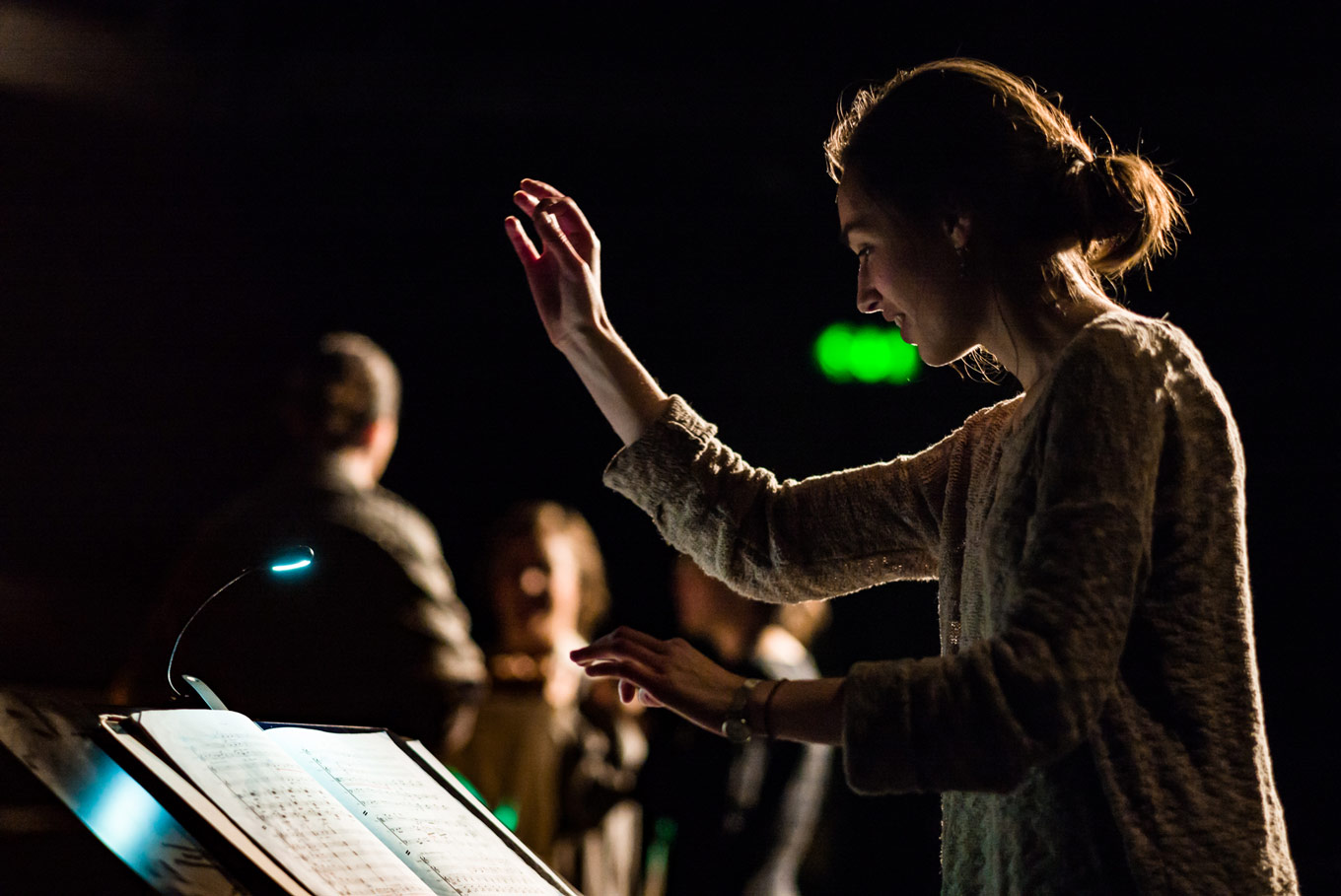
"How did we do?" Second Movement Presents: rough for opera #16
ReviewMonday night was the sixteenth edition of rough for opera, a “scratch night” for new opera presented by Second Movement at The Cockpit in Marylebone. The format of the night provides a safe space for creative teams to present short works in front of an audience, with the added bonus of receiving audience feedback at the end of each performance. In addition to an informal discussion led by Professor Paul Barker following each piece, the audience was invited to fill out a feedback form, where we could describe what we saw as effective or ineffective, enjoyable or unenjoyable.
“Can You Give Up Your Seat Please?” by composer Michael-Jon Mizra was a piece concerning the story of Doctor David Hao, whose story was made famous by a viral video in which he was dragged out of his seat on a United Airlines flight. The musical elements of this piece were scarce, only using a clarinettist and two singers, all performing without set characters to draw from. Instead the narrative was driven by a projection onto the stage wall, showing different angles of Dr. Hao being forcibly removed from his seat.

The group Voicings Collective presented their piece, “Voicings,” which set out to explore how ordinary people can find themselves complicit in serious crime. This piece was unique compared to any opera I’ve seen lately in that it was created by all of the performers in a rehearsal space - in this case, a residency of five days. Musically, the performers were virtually unaccompanied, and the general tone of the piece had an improvisatory feel. “Voicings” did not seem to be driven narratively, instead it felt like more of a reflection, or rumination of how people come together in the face of something they don’t want to do.
“Radium” was the piece that felt most akin to traditional opera. Composer Georgina Bowden and librettist Eleanor Knight wrote a piece centered around young women in the early twentieth century who were tasked to working with radium paint, moistening the tip of their brushes in their mouths before painting. Here, the narrative was musically driven, as we watch beauty-obsessed workers become consumed by radium, both figuratively and literally as they collapse to their deaths at the end of the work. The singers had composed lines throughout, accompanied by an ensemble of string instruments. This piece had a traditional narrative arc as well, following Sarah, a new girl come to work in the lucrative radium industry, and ending in the demise of her and her colleagues.

All of the pieces were presented as works in progress, with the possibility of expansion or revision pending audience feedback. Being in this kind of environment, even as a spectator, was thrilling, with everyone in the room contributing to the creative process that goes into creating a piece of music theatre.
It was exciting to be in the audience on Monday night, as the works presented were completely different in nature - each pulling from different genre and each setting out to achieve a different goal. The question brought to my mind at the end of rough for opera was the ever-current “What is opera?” issue. Can we define any piece that uses music to tell a story as opera? If we want more contemporary opera in our lives, I think it’s worth exploring this question with more varied and experimental works like those present on Monday night.


Comments